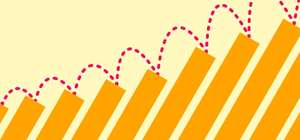
Productivity is one of those buzzwords that you hear every day, but can be difficult to actually define.
"Being productive" will mean something slightly different to everyone on your team! Understanding these multiple productivity styles is the secret to getting the most out of your team, especially in a hybrid or remote work environment.
Read on to learn about the five different productivity styles and how they can be supported in the workplace!
By the way, what are productivity styles?
Kind of an odd term, right?
The idea of productivity styles started with Carson Tate, an employee engagement expert and the founder of Working Simply, Inc. She developed an assessment for employees that could determine which productivity style fit them best.
The productivity style that works for you is a combination of many factors, both personal and professional.
Here are just some things that affect your style of productivity:
- A preference for working solo or collaboratively
- Level of spontaneity
- Need for routine/resistance to change
- Personality type (e.g. introverted or extroverted)
- Whether you look at small details or the big picture
With these in mind, let’s take a look at the five productivity styles from Tate’s assessment.
Remember that no one way of being productive is "better" than any other, it’s just different! For each style, we’ll explore the best workplace practices and some blind spots to look out for.
The Planner
The Planner is an expert in organization. They know exactly when everything needs to be done, and who’s responsible for doing it.
Think color-coded calendars, project management timelines, and online planners with meticulous annotations. That’s the Planner!
Cloud software is ideal for Planner types because it lets them share all their notes and schedules across devices and between team members. Consider using a cloud workspace such as Google Workspace (formerly known as G Suite) and a cloud business phone solution.
Best practices:
- Collaborative team calendars to schedule meetings and avoid clashes
- Take in-depth notes
- Use time blocking to get the most out of each work day
- Set out clear deadlines and responsibilities for each stage of a project
- Be punctual
Blind spots:
- Lack of spontaneity
- Struggles to adapt to unexpected situations
- Resistant to deviate from the plan
2. The Prioritizer
This team member is happy calling shots and making cuts when necessary. When there’s a tricky decision to be made, the Prioritizer is the person you need. They are analytical, logical thinkers who prefer realism and facts over more abstract goals.
Best practices:
- Use enterprise communication to keep team members updated on the progress of a project
- Have an agenda prepared for every meeting
- Set realistic goals
Blind spots:
- Struggles to disconnect from work—can lead to burnout and stress
- Less interested in bonding or socializing with their team
3. The Visualizer
Finding creative solutions is the Visualizer’s favorite way to be productive. They know how to look at the big picture instead of getting caught up in small details.
Visualizers are often found in the team groupchat suggesting tons of new ideas for the current project.
Best practices:
- Make space for team members to voice new ideas
- Encourage brainstorming
- Support thinking outside the box
- Always consider how a project fits in with the company’s overall goals
Blind spots:
- Can lose enthusiasm for a project as the novelty wears off
- Their spontaneity may not work well with Planner and Prioritizer types
- Switching between tasks or multitasking can lower productivity
4. The Arranger
The Arranger thrives on collaborative work. Their thinking style is emotive and centered on people rather than numbers—this often makes them popular in the team but not the best at hitting deadlines or budgets.
When the Arranger is in charge, there’s a pretty high frequency of meetings that could’ve been emails. They’re great for building bonds in a team but perhaps not the most efficient users of time.
Best practices:
- Regular team meetings
- Use team productivity tools rather than more individualistic strategies
- Effective communication tools
- Understand when a full meeting is necessary and when something quicker like an async check-in, email or digital signature solutions would work instead
Blind spots:
- Can struggle to stick to budget and time constraints
- Difficulty in prioritizing tasks
5. The Adapter
Originally, Carson Tate set out four productivity styles: the Planner, Prioritizer, Visualizer, and Arranger styles that we’ve explored so far.
But if you don’t fit neatly into one of those types, then you might be an Adapter.
The Adapter moves between the four other productivity styles depending on the task at hand. These people are well suited to fast-paced, changing work environments. They also know that different productivity strategies may work better for each stage of a project.
Adapters can be prone to multitasking, though, and sometimes stretch themselves too thin at work. The best way to support these employees is to foster a collaborative environment where tasks and responsibilities are shared across the team.
Productivity in the Workplace
With all these different productivity styles at play, how do you create a work environment that supports all of them?
Fortunately, there’s a range of digital workplace services out there to boost team productivity, no matter the mix of productivity styles.
Effective meetings
In a post-lockdown world, remote meetings are increasingly common. They allow team members to work together from anywhere in the world as long as there’s an internet connection.
However, 20% of workers say that their meetings are ‘rarely productive’. They are often distracted by off-task behaviors.
Understanding the productivity styles we explored earlier provides a template for effective team meetings. Here are some tips for productive meetings and the working styles they support:
- Prepare an agenda for every meeting with estimated timings and realistic goals you want to achieve (The Prioritizer, the Planner)
- Include check-in questions to support wellbeing (the Adapter)
- Connect the meeting goals with the company’s wider targets (the Planner, the Visualizer)
- Take notes during every meeting and share them with all attendees (the Adapter, the Prioritizer)
Communication is key
Whether you use a brand-new messaging app or classic business telephone systems, communication is essential to working in a team. Aligning different productivity styles only works if everyone communicates about those productivity styles and what suits them best.
Any workplace communication strategy should also anticipate any conflicts or misunderstandings as a result of different personality types. For example, the Prioritizer will be brief, almost blunt, in their emails, whereas the Visualizer and Arranger want to include as many ideas as possible.
Productivity means something different to everyone. When it comes to productivity styles, people fit into one of these five types:
- The Planner - organized and great at scheduling but resistant to change.
- The Prioritizer - keeps the team on track with budgets and deadlines but can neglect the emotional and social aspects of teamwork.
- The Visualizer - a creative problem solver who loves to work outside the box but can be easily distracted.
- The Arranger - an emotive people-person who always puts their team first, even if they sometimes need to prioritize a different task.
- The Adapter - able to move between the other four productivity styles depending on the task at hand.
A team that contains any or all of these types of workers will benefit from effective meetings and strong communication. Connect with your team and find out how they like to be productive, and adjust your working styles accordingly.
Author:
Jenna Bunnell is the Senior Manager for Content Marketing at Dialpad, an AI-incorporated cloud-hosted unified communications system that provides valuable call details for business owners and sales representatives with cloud PBX features. She is driven and passionate about communicating a brand’s design sensibility and visualizing how content can be presented in creative and comprehensive ways. Jenna has written for other domains such as MacSecurity and CEO Blog Nation.








